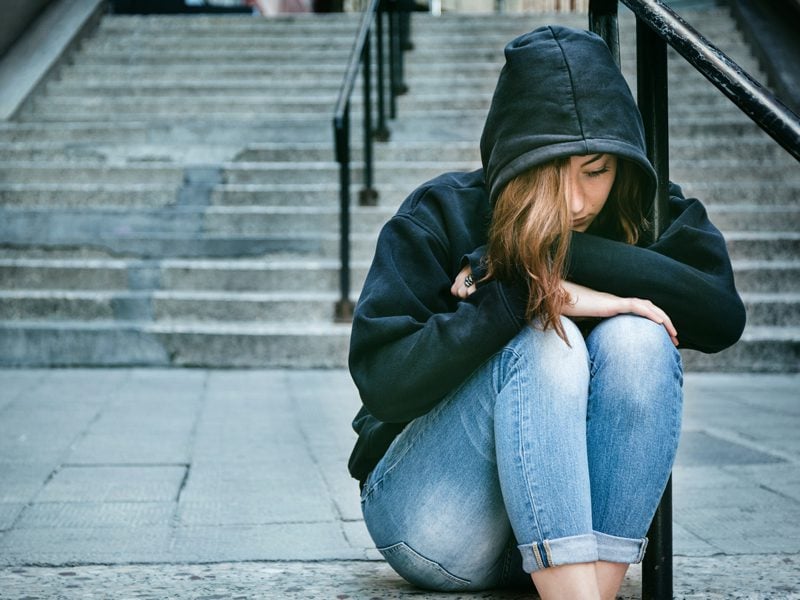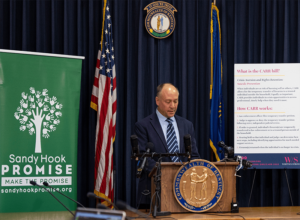May is Mental Health Awareness Month. It’s time to better understand the relationship between mental illness and violence. In fact, did you know that people with mental illness are far more likely to be the victim of a crime than to commit a crime? 1
Notably, advocates have been working to erase the stigma about getting mental health help. It’s also a time to honor mental health professionals. They’ve been supporting our students through their struggles in schools across America. Learn more about support for youth mental health.
Commitment to Mental Health Awareness
School psychologist Mary Sherlach was tragically killed at Sandy Hook Elementary School. Her legacy of devotion to student mental health continues with Sandy Hook Promise’s violence prevention work.
“She loved her job so much. She would do anything for her students. That’s why she didn’t think twice about running toward the sound of gunfire on Dec. 14, 2012. She gave her life to protect those kids.”
Bill Sherlach, Sandy Hook Promise board chair and co-founder, husband of Mary Sherlach
That’s why mental health and wellness is a cornerstone of our approach to creating kinder, safer schools. Notably, our advocates and volunteers helped pass important legislation to improve mental health care in our nation.
Five School-based Mental Health Awareness Activities
Mental Health Awareness Month is a great time to do a few activities. Our curriculum experts have devised classroom activities to suit any schedule.
1. Schedule time for Mindful Minutes at the start of class
Introduce students to simple mindful breathing techniques to calm and comfort. Designate class time to self-care for students with a loving-kindness meditation. You can also add a little whimsy. Try this student-led mindfulness activity like Bubbles and Breathing. Get the guide.
2. Connect to Trusted Adults
Encourage all students to identify a Trusted Adult in their life. Then ask them to fill-in the five qualities that make this person a Trusted Adult they can go to for help. Download now.
3. Using Creativity to Raise Mental Health Awareness
Start by assigning a group project to students to identify and share resources. Create a pamphlet with mental health resources and wellness strategies. Make it a project-based learning opportunity by asking students to interview local mental health professionals. Next, encourage their creativity to spread the word. They could produce a video, poster or podcast with tips from experts. Get started with these resources.
4. Train Students in Say Something: Prevent Suicide
Suicide is how mental illness can become fatal. It’s more important than ever to recognize the warning signs of suicide. Act immediately, take it seriously, and get help before it’s too late. You can teach students how to recognize the warning signs of suicide with Sandy Hook Promise’s supplemental training found here.
5. Watch the Webinar on Mental Health Awareness
For mental health awareness resources and Information, watch this webinar. It includes data and resources for SAVE Promise Club Advisors, student leaders, educators and other caring professionals.
“The numbers of young people dealing with mental health issues is staggering. Schools and communities must support social and emotional needs of our youth if we want to see positive academic and other outcomes. Young people need safe, supportive spaces.”
Jim Wise, lead webinar presenter. He’s a Licensed Clinical Social Worker (LCSW) and SAVE Promise Club Manager, Sandy Hook Promise.
Support for Remote and Distance Learners
These resources for virtual learners can help improve mental wellness for students outside of the classroom. Learn more.
Support Mental Health for Youth of Color
The Pursuing Equity in Mental Health Act addresses mental health disparities among youth. The suicide rate is rising among Black youth and mental health disparities continue to increase among youth of color.
The bill provides money to train health care professionals to better support mental health for Black and brown youth. It also helps build community programs to reduce the stigma associated with mental health conditions among minority groups.
Help keep kids safe at home, at school, and in their communities. Sign your name to support the Pursuing Equity in Mental Health Act.
Sources
- Ghiasi N, Azhar Y, Singh J. Psychiatric Illness And Criminality. StatPearls Publishing. https://www.ncbi.nlm.nih.gov/books/NBK537064/


